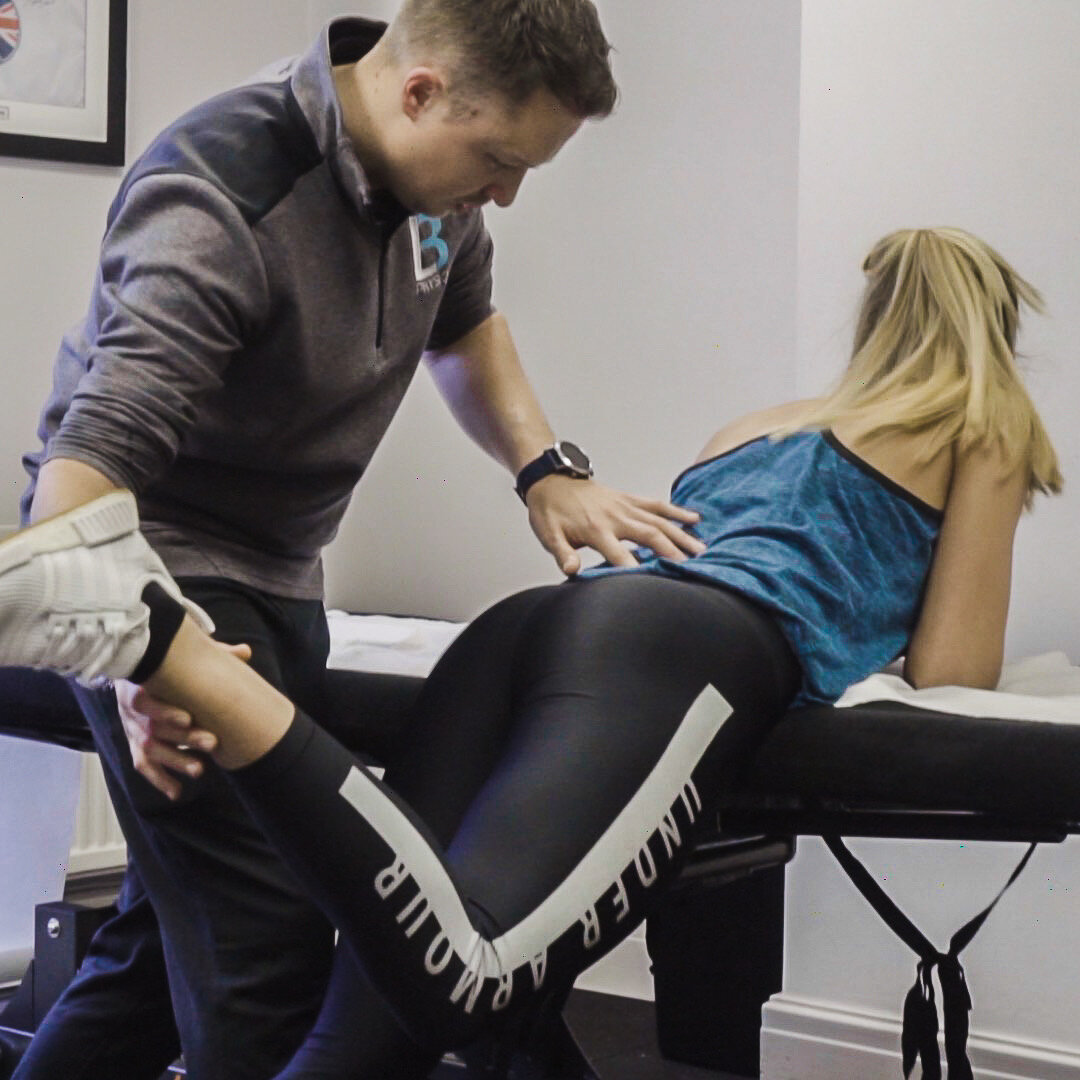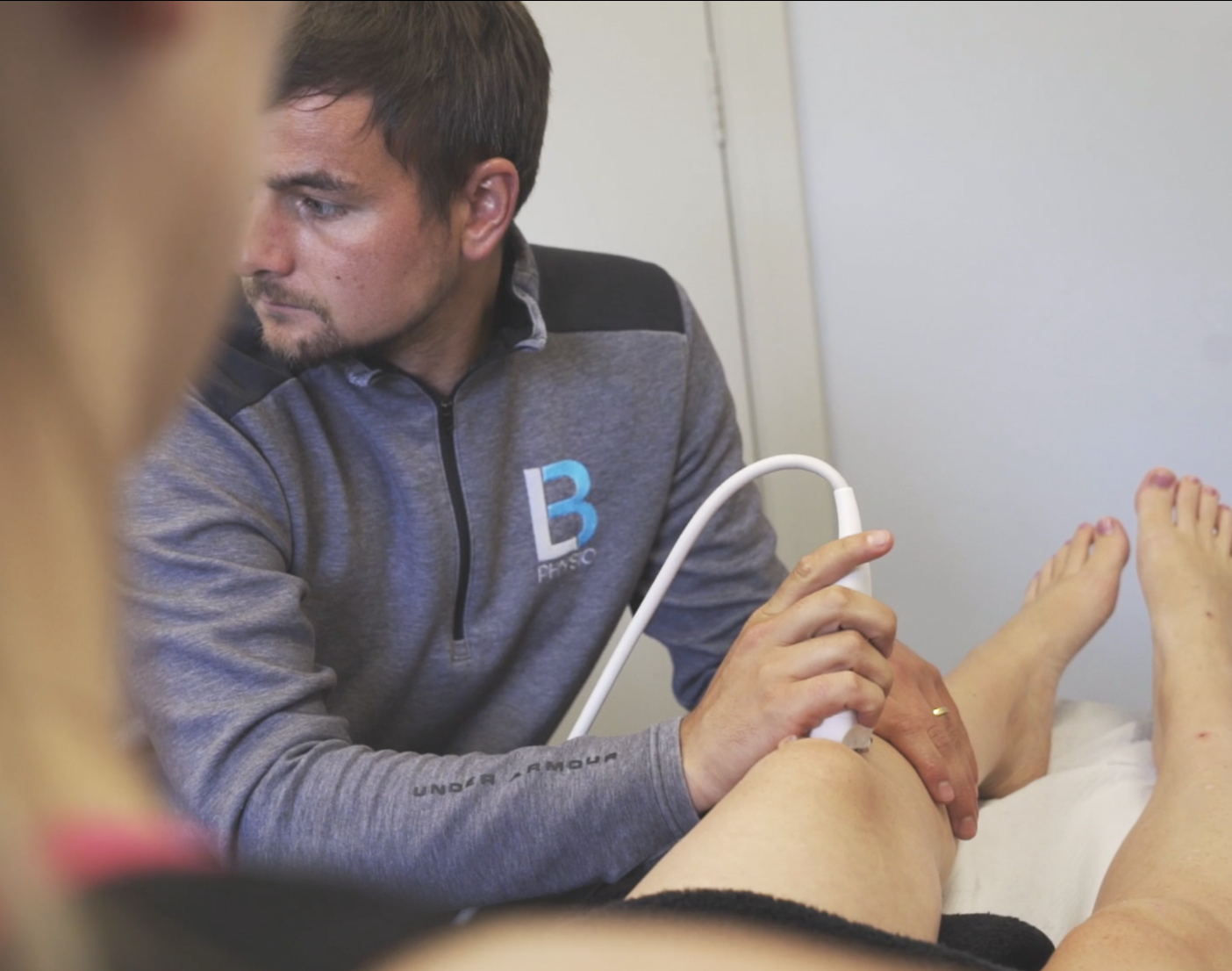
What to expect from your session?
All injuries and problems require a detailed initial assessment. This allows your clinician to understand your problem, and build the best picture enabling them to provide the most appropriate treatment tailored to your problem. At LB Physiotherapy, there is no one size fits all solution.
Your first session will include:
Initial discussion - understanding you.
Examination and movement assessment - locating the source of the problem.
Diagnosis and discussion - explaining our findings.
Treatment planning - setting goals and expectations together with your clinician.
First treatment
Physiotherapy
What is Physiotherapy at LB Physio?
Physiotherapy is a science-based profession and takes a ‘whole person’ approach to health and wellbeing, which includes the patient’s general lifestyle. At the core is the patient’s involvement in their own care, through education, awareness, empowerment, and participation in their treatment.
LB Physiotherapy want to improve the lives of as many people as possible by helping people realise their potential. Our physiotherapy is entirely focused on helping people affected by pain, injury, illness or disability. We achieve this by providing a specialist physiotherapy service, delivered by highly trained professionals, using the careful application of treatment, movement, education, and advice.
Do I need Physiotherapy?
You can benefit from physiotherapy at any time in your life. Physiotherapy helps with sudden injury, managing long-term medical conditions such as arthritis, and in preparation for childbirth or a sporting event.
We believe that physiotherapy should be more than just treating pain. We teach you about your pain, injury or condition to explain why it has occurred, addressing the underlying causes – not just treating your pain until the next time it comes back!
Initial session £65
Includes Assessment, Diagnosis & Treatment
Follow up treatment sessions from £45
MSK Diagnostic Ultrasound Scan
What is ultrasound?
An ultrasound is a type of scan that uses sound waves to produce images of structures inside the body including; bones, muscles, ligaments, tendons and fluid.
Ultrasound scans can help to diagnose a number of injuries and conditions.
Why get an Ultrasound Scan?
With Ultrasound, not only can we quickly assess the integrity of muscles, tendons, ligaments and nerves, we can also repeat the scan to determine how successful the treatment plan is progressing. This will help to confirm your diagnosis, structure your treatment plan and monitor your treatment progress.
No additional cost
(Your clinician will discuss this with you if needed)
Movement Screening
What is a movement screening?
A movement screen is a detailed analysis of how an individual moves. The screen is a multi joint testing approach, looking to highlight areas of efficiencies in the body which may be contributing to poor technique and pain.
Why get A movement Screening?
If you’re suffering from pain or discomfort when performing a sporting activity or in daily life; if you’re subject to repetitive injuries; if you want to prevent injury or you’re planning a return to activity after a break, our Movement Screening is ideal for you.
Testing, Analysis & Movement plan - £120
60 minute session + 30 minute follow up
Sports Massage
What is Sports Massage?
Sports massage is a form of massage involving the manipulation of soft tissue to benefit a person engaged in regular physical activity. Soft tissue is connective tissue that has not hardened into bone and cartilage; it includes skin, muscles, tendons, ligaments and fascia (a form of connective tissue that lines and ensheathes the other soft tissues). Sports massage is designed to assist in correcting problems and imbalances in soft tissue that are caused from repetitive and strenuous physical activity and trauma. The application of sports massage, prior to and after exercise, may enhance performance, aid recovery and prevent injury.
Why get sports massage?
Elite athletes consider sports massage an unmissable and totally crucial part of their ‘physical conditioning regime’, to improve performance and boost recovery. But whether you’re off to compete at the Olympics, are a regular gym bunny or a sedentary office worker, everyone’s likely to experience discomfort or tight muscular pain at some point. To clarify, a sports massage is not a ‘cosmetic’ or superficial ‘chill out’ treatment you’d find at a spa; it’s an intensive dose of focused, physical therapy schooled in the medically demonstrable study of the musculoskeletal and nervous systems, administered by qualified professionals.
The benefits of a sports massage are numerous: improved flexibility, reduced risk of injury, and a boosted circulatory system. We offer massage to suit your needs; pre-race, post-race or simply part of your training regime.
30 minutes - £35 a session
60 minutes - £50 a session
Functional Training
What is Functional Training?
Functional Training is about more than lifting weights – it encompasses the entire development of the individual and what is needed to improve physical performance. This includes plyometrics, speed and agility, endurance and core stability with strength training being just one piece of the jigsaw.
Research has demonstrated that not only does training improve performance; it also shows that that incorrect training can cause decrements to performance. Using techniques such as plyometrics in some high-power athletes and sports-specific movements in others, individuals may improve physical function, pain and athletic performance.
Why would i need functional training?
Functional training is used to improve movement patterns and ensure injury risks are kept to a minimum. If you are triathlete, golfer, tennis player or someone who wants to keep active and look after the longevity of your body then functional training is for you.
Price - from £45 a session
Acupuncture
What is Acupuncture?
Acupuncture is a form of treatment that helps to promote healing. It involves the insertion of extremely fine needles into specific points of the body.
Acupuncture has been used for thousands of years in China and more recently since the 1970's in Western Medicine.
Traditional Chinese belief is that energy flows in channels (meridians) throughout the body. When pain is present in an area of the body, the energy stagnates. Stimulation, via acupuncture needles helps to restore the healthy flow of energy.
Acupuncture needles are often inserted into trigger points (tight sensitive areas in the muscle) to help relieve pain and restore movement.
Why Get acupuncture?
We use acupuncture to relieve pain for a number of conditions:
Back pain and sciatica
Migraine and headache
Muscular and joint pain
Whiplash injury and neck pain
Osteoarthritis.
It will be necessary to complete a thorough assessment/examination of your symptoms in order to establish if acupuncture is an appropriate form of treatment for you.
Included in treatment if needed.
G.A.I.T Analysis
What is G.A.I.T. Analysis?
Gait analysis is a method for identifying bio-mechanical abnormalities in the gait cycle - in other words it’s a way of assessing the way in which you walk and run.
Using cutting-edge video technology we are able to analyse the way in which your foot strikes the floor, and determine whether your foot rolls inwards (pronates), doesn't roll inwards enough (overpronates/supinates) or stays neutral. This information, combined with an understanding of your injury history and the kind of distances you regularly run, allows us to correctly identify an treatment for you.
Do I need G.A.I.T. Analysis?
Stephen and David firmly believe that the majority of injuries develop due to the way an individual's posture and movement.
Over the previous 7 years Stephen and David have gained experience working with 1000's of runners, both recreational and competitive. From their previous experience's of working with runners, Stephen and David both stress the importance of looking at the way you walk and run in relation to your injuries or pain.
At LB Physiotherapy a running machine is used to observe an individuals gait. From this running styles, movement patterns and faults can be identified. These can then be discussed with the individual to help them understand why they are experiencing pain or injury's along with helping them to choose the most appropriate footwear.
Analysis & Retraining - £60
Workplace Assessment
What is a Workplace Assessment?
Workplace assessments are usually requested by an individual or employer who believes that their workstation set up is causing pain and discomfort, commonly affecting the low back, neck or wrist. Workplace assessments are also used to help individuals experiencing difficulties at work continue in or return to work safely and with less risk of aggravating symptoms.
A workplace assessment considers an employee’s situation, ergonomic setup and work organisation to provide practical recommendations to improve their comfort in the workplace. Workplace assessments are commonly requested to review office ergonomics and display screen equipment (DSE) set up but are not just limited to office environments. They can benefit employees in a full range of working situations.
Why Get a Workplace Assessment
Employers with more than 5 staff are required by law to undertake regular risk assessments of all employees who use display screen equipment (DSE) for more than one hour at a time in their working day.
Compliance with the law is one good reason to ensure that DSE assessments are undertaken but there is also significant absence related cost savings that can be made by reducing the risk of developing musculoskeletal disorders.Workplace assessments also play a vital role for employees returning to work after a period of absence or who have a pre-existing disability.
We tailor the service to your business requirements.
Quote available on request.
Pfilates
WHAT is pfilates?
Pfilates is an accessible method used in recovery to enhance the pelvic floor. The pelvic floor muscles main function is to control bladder and bowel, but also supports pelvic organs and sexual function.
The Pfilates training programme is a combination of pilates, plyometrics and traditional Kegel exercises which determine what exercises are most likely to give the best success at strengthening the pelvic floor. Clinical data has shown that after 4 weeks of performing pfilates exercises patients had a 33% improvement of pelvic floor strength and 74% overall improvement in bladder symptoms.
Pfilates offers a fitness approach to bladder incontinence and pelvic floor weakness. It combines functional movements that activate the pelvic floor and co-contractors to enhance optimal peak contraction. This is where Pfilates differs from ‘Kegel’ exercises. Kegel exercises activate the pelvic floor muscle in isolation, whereas Pfilates activate the pelvic floor muscles during functional movements which has shown to increase pelvic floor strength by 62%.
Who is pfilates for?
Pelvic floor weakness and bladder incontinence is a FITNESS problem and should not be disregarded or something to be embarrassed about, it is more common than you think. It is common to think that only surgery can fix this problem however, like every other muscle the pelvic floor can be trained through exercise.
There are numerous possible causes to pelvic floor problems such as childbirth, injury, aging process, lack of fitness and overall strength, causing further issues such as bladder and bowel incontinence, needing to use the bathroom more frequently than average and suffering from prolapse or sexual dysfunction, including erectile dysfunction.
“Only women need to do pelvic floor exercises” - all genders have a pelvic floor to enable us to control our bladder, bowel and hold our organs. It is not only for women of a certain age or postpartum, men can massively benefit from pelvic floor strengthening. Pelvic floor strengthening techniques can eradicate erectile dysfunction for some men. Research has shown that pelvic floor strengthening resolved the problem in 30% of particiaptns and improved performance in up to 70% of participants.
The pelvic floor and core are vital for sport performance. It forms the foundation for all movements, balance, stability and flexibility. Almost every exercise or physical activity utilises the pelvic floor. From golf, being able to maintain a stable core to allow a fluid and consistent swing at intense force to athletes who take part in sports with quick decision making and change of direction, like football or rugby.
121 & Group sessions available - call for price.
Heath & Wellbeing Assessment
What is a health and wellbeing assessment?
Health and well-being assessments are usually requested by a workplace or employee. Assessments are used to assess emotional states, recognise mental well-being and obtain an overview of an individuals movement health. Health and well-being assessments are used to help individuals experiencing difficulties at work, continue in or return to work safely. Workplaces often use a health and well-being assessment to support and help any employees that may require some support.
why get a health and wellbeing assessment?
An efficient, hard working team hitting targets and achieving goals is a fantastic environment to be in. Often these environments are fast paced full of focused individuals. Occasionally team members can become swallowed in day to day life and put their own health and wellbeing to one side. Our Health and wellbeing assessments allow teams to take time out to ensure their emotional and mental state is looked after. The health and wellbeing assessments have been proven to reduce sickness rates.
We tailor the service to your business requirements.
Quote available on request.
Yoga
What is Yoga?
Yoga is an exercise based intervention that physiotherapists may use if they identify the evidence for its use is suitable for a specific individual or group of patients and their condition.Yoga is quickly becoming one of the most popular, if not the most popular, workout regime among those who are looking to gain flexibility, strength and even lose weight. It can be done from the privacy of your home or in a classroom.
Do I need Yoga?
Yoga is great for reducing stress and allowing for greater relaxation. Once you get into Yoga though, you learn that it is so much more than just a way to workout and keep in shape. It is a philosophy, a passion and a way of life for many of those involved in Yoga. While you may be getting into yoga for the exercise, you may soon find yourself wrapped in the philosophy and spirituality that Yoga brings a long with it.
Yoga can do a lot for the human body, although it won't cure every ailment. Yoga can be worked into virtually any lifestyle or schedule. Yoga has been proven to increase health and body awareness allowing yoga participants to better control their bodies. From flexibility increases to better body alignment, Yoga can help with a variety of ailments.











